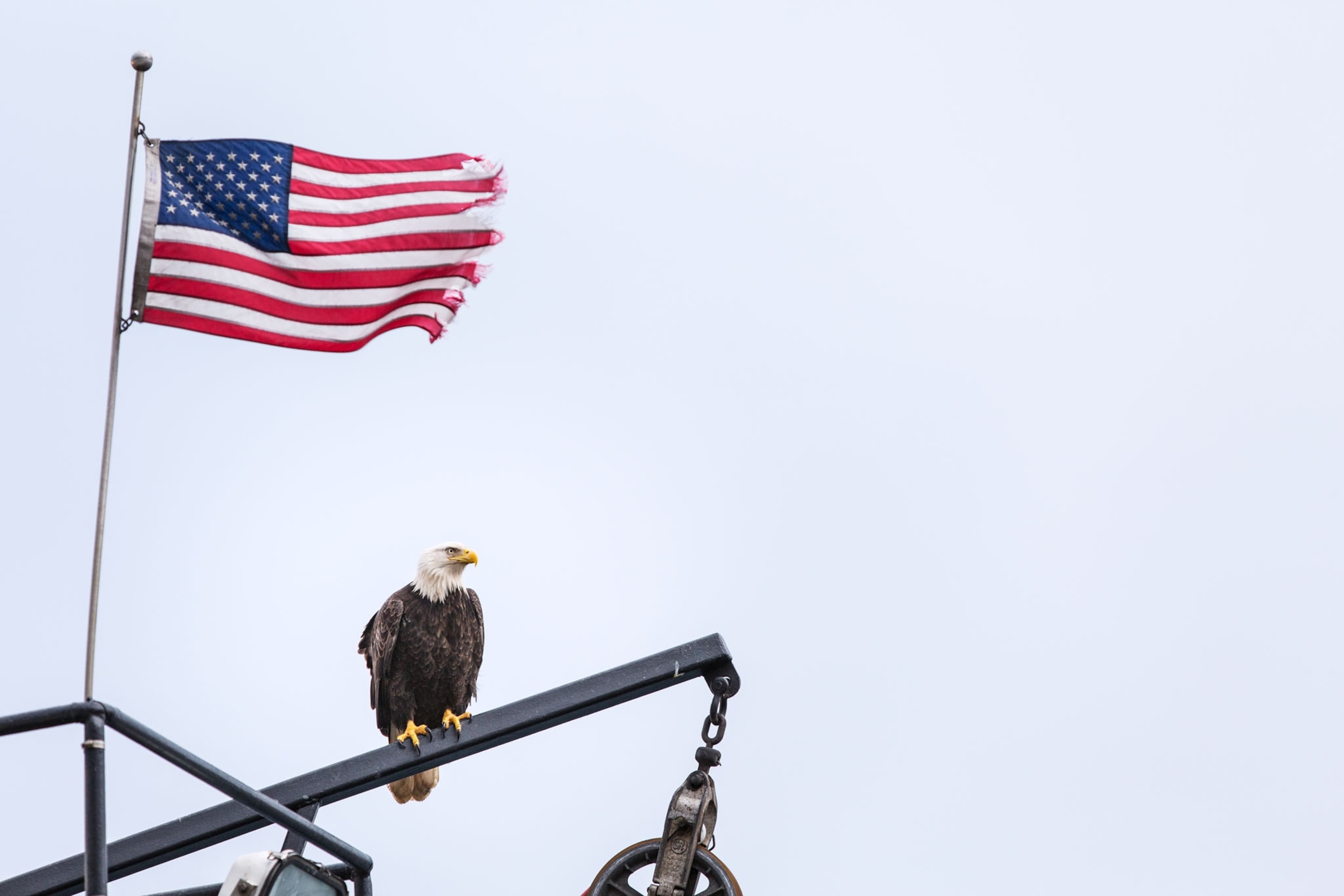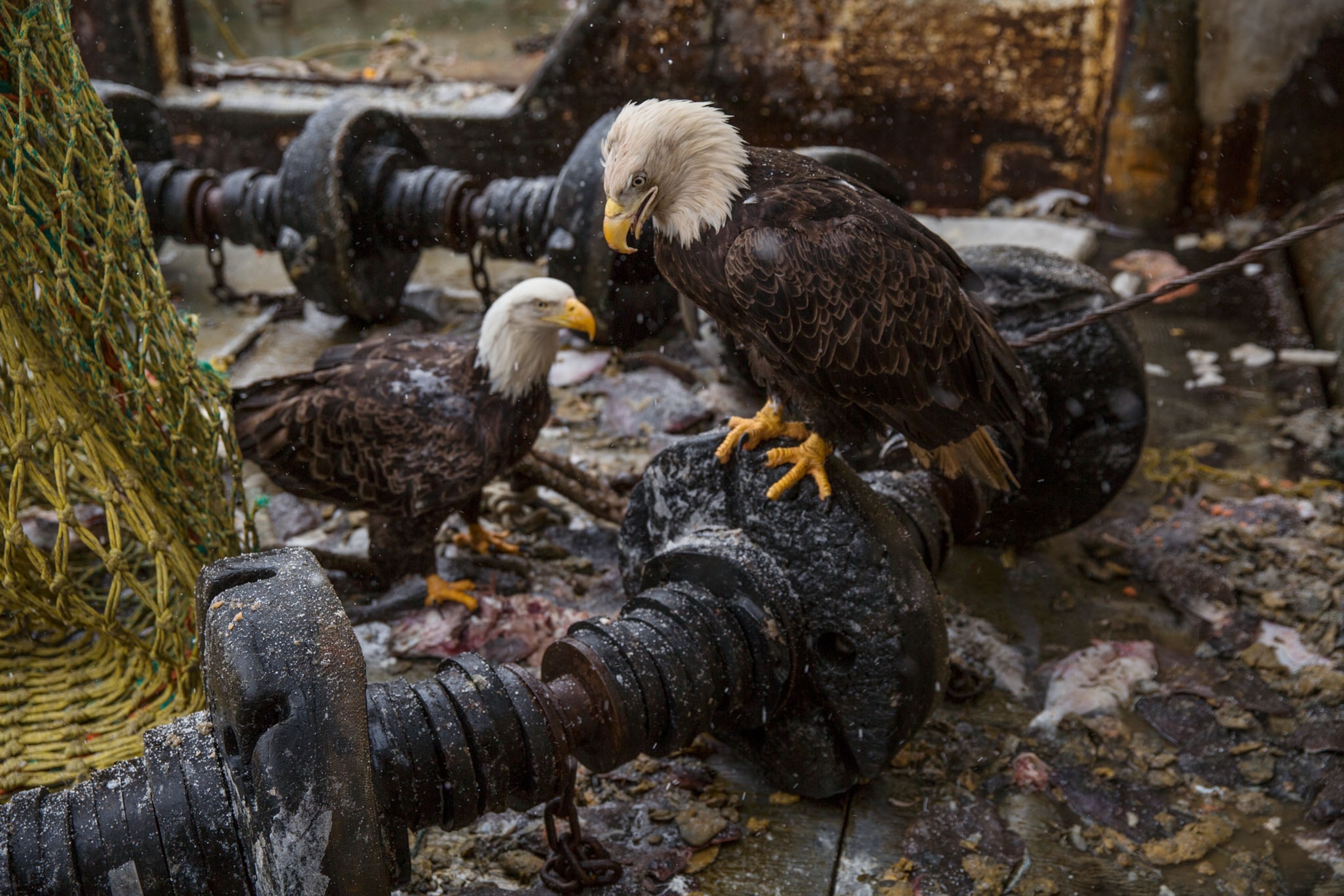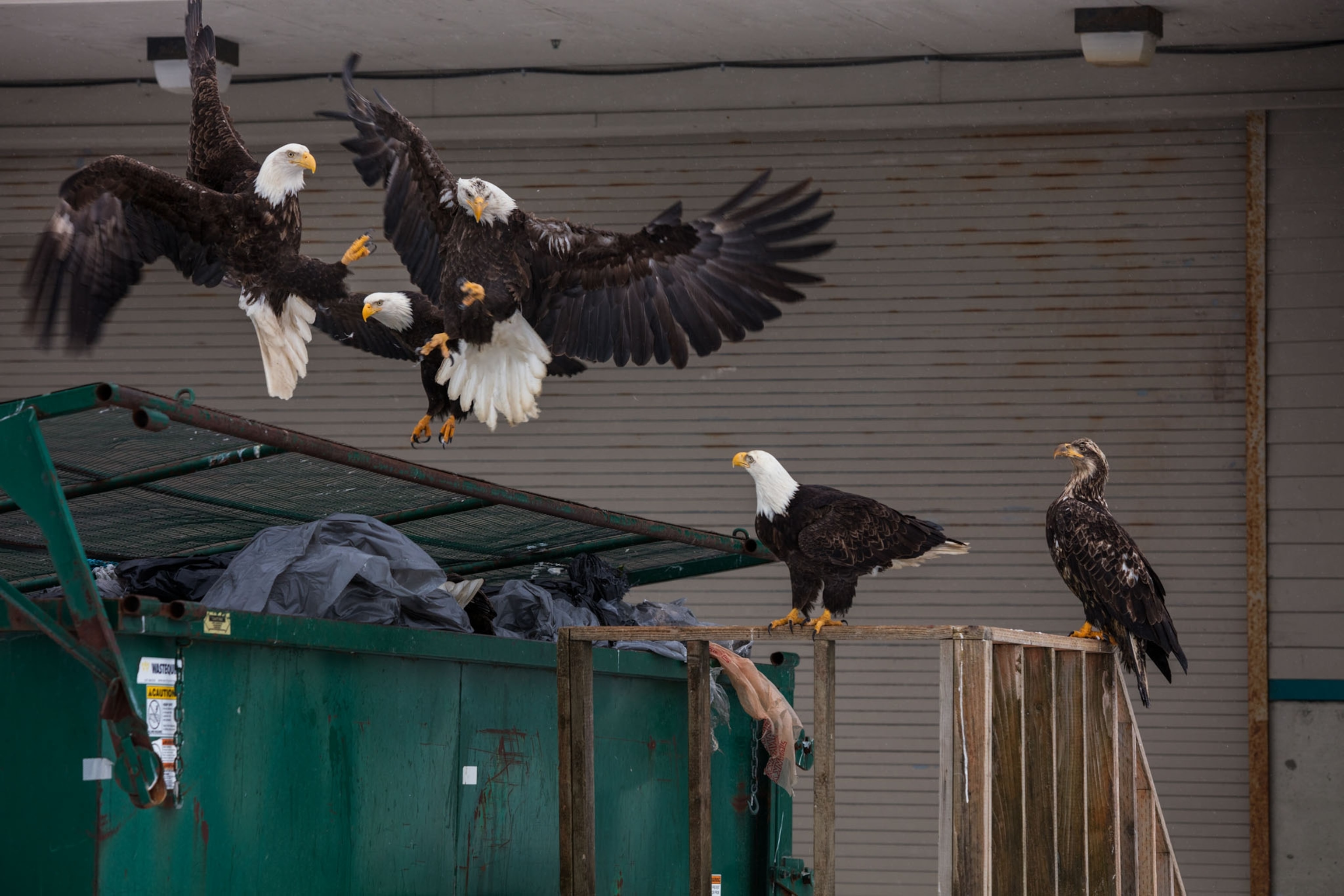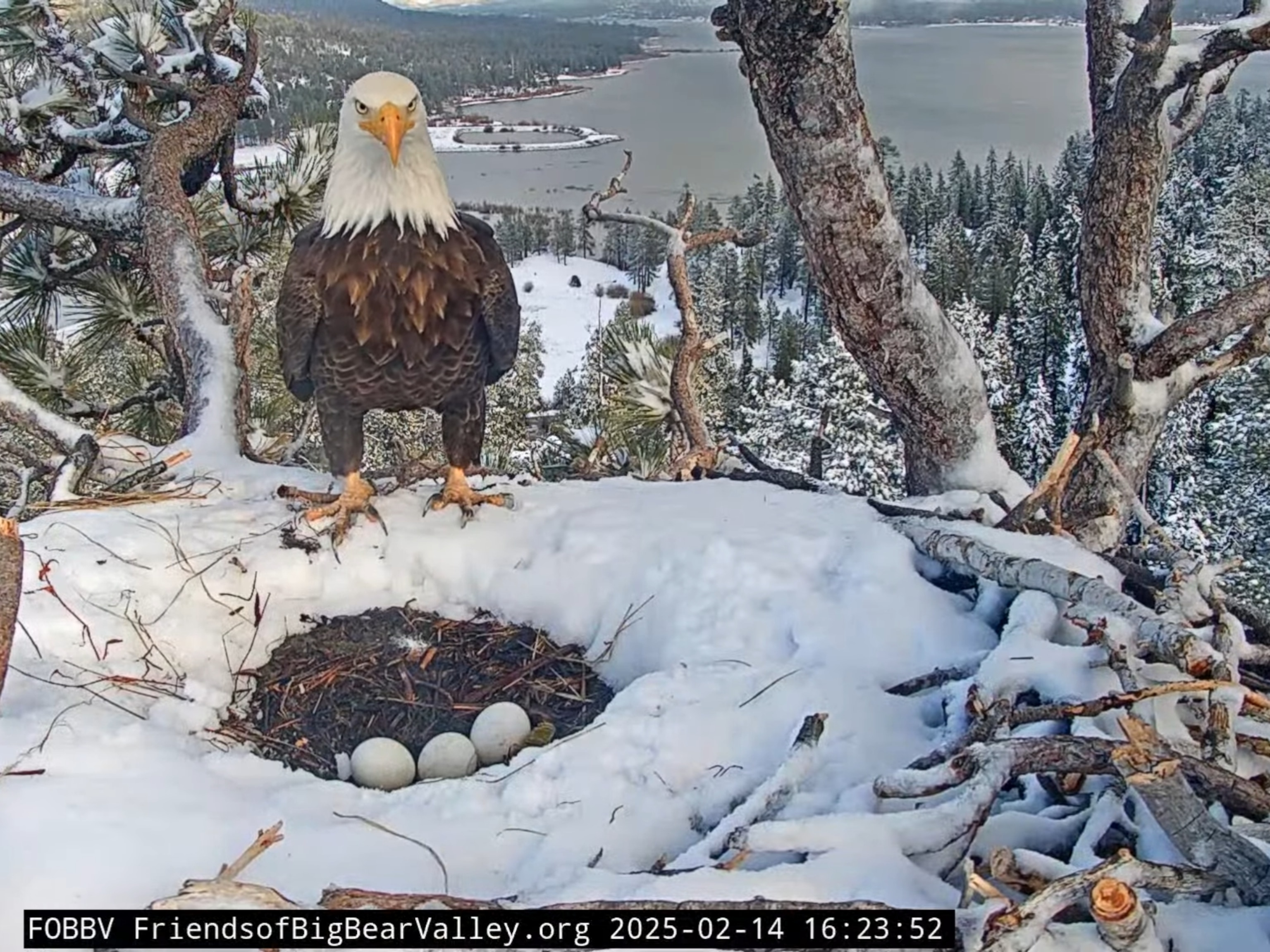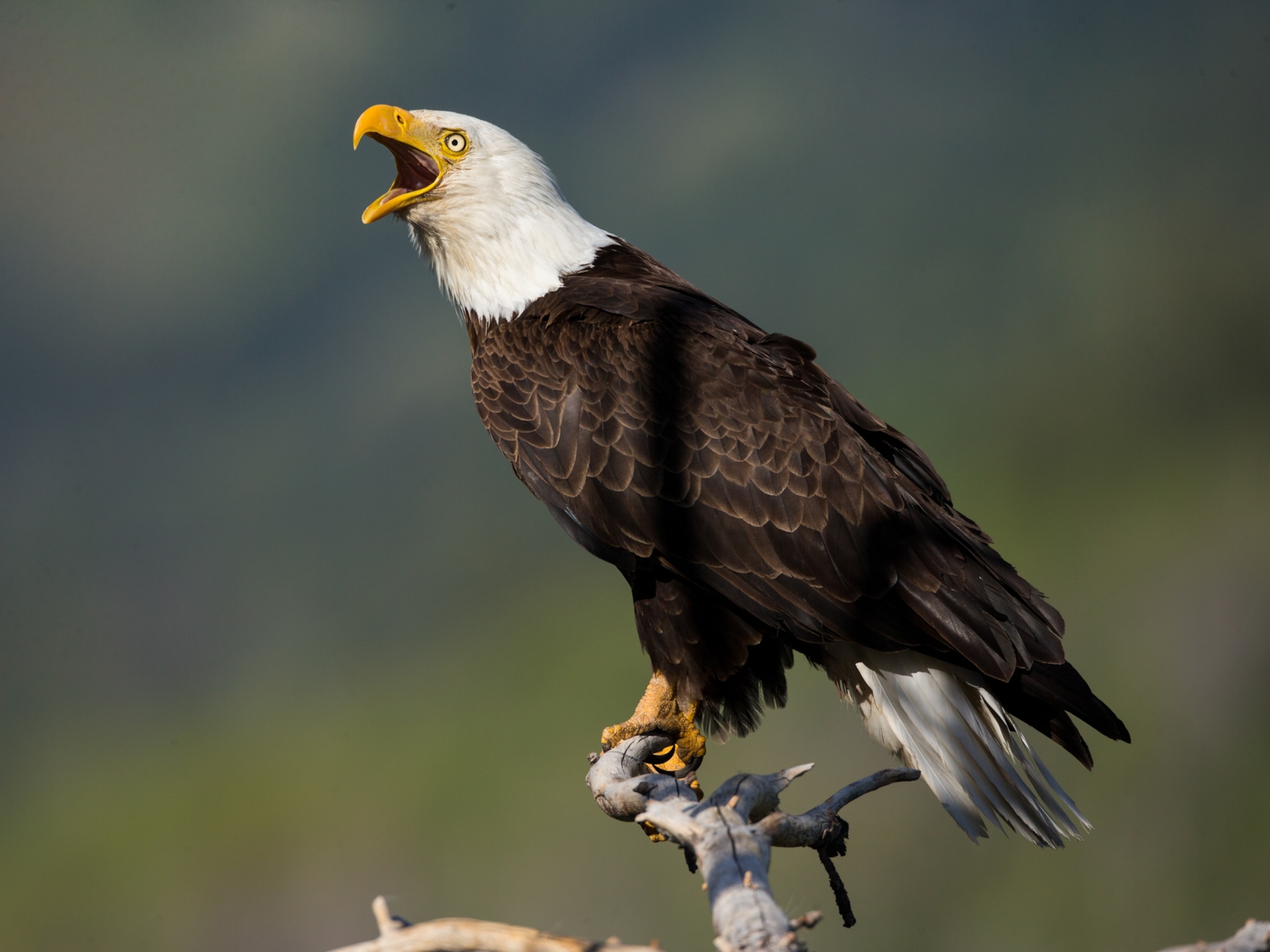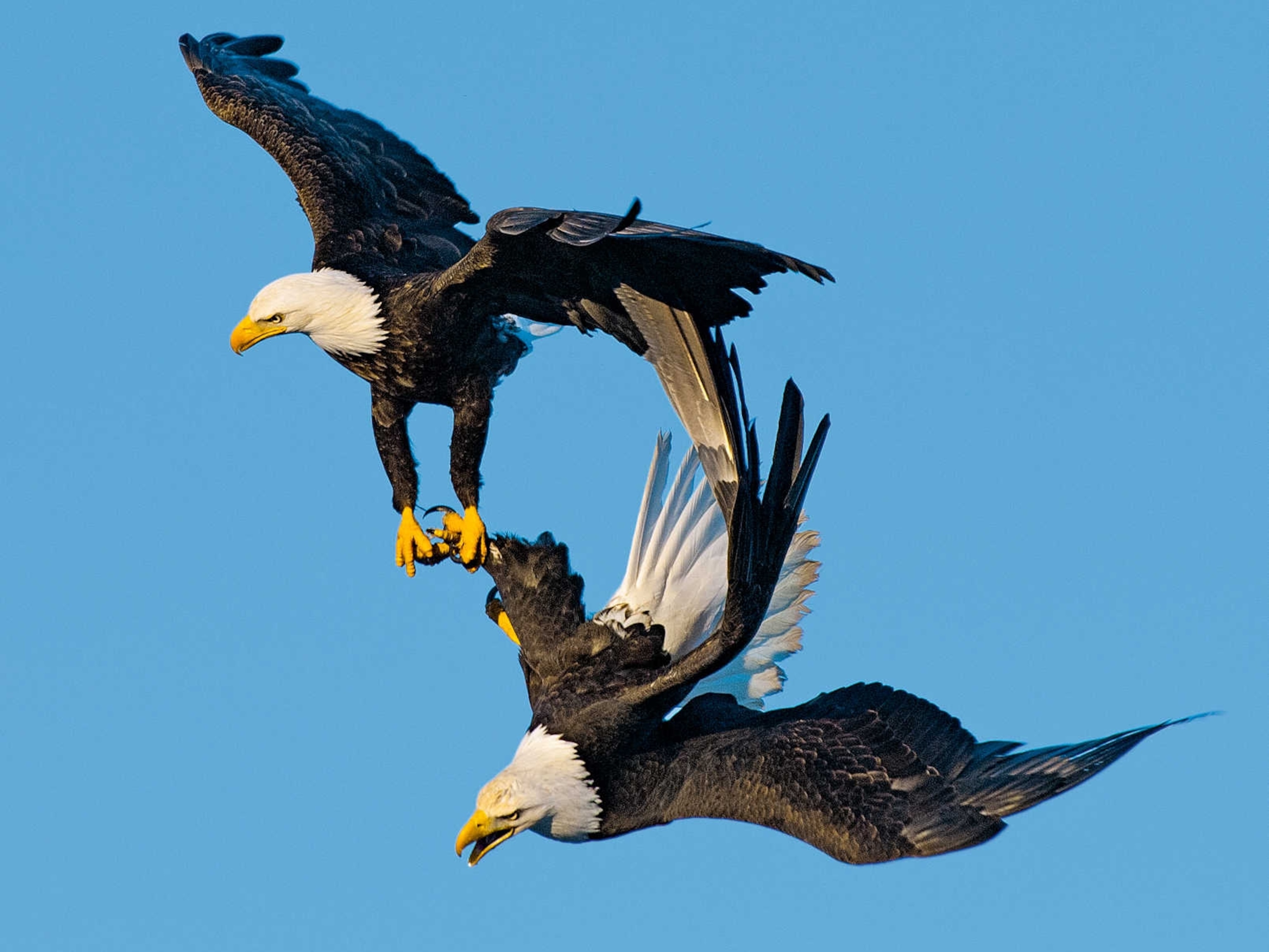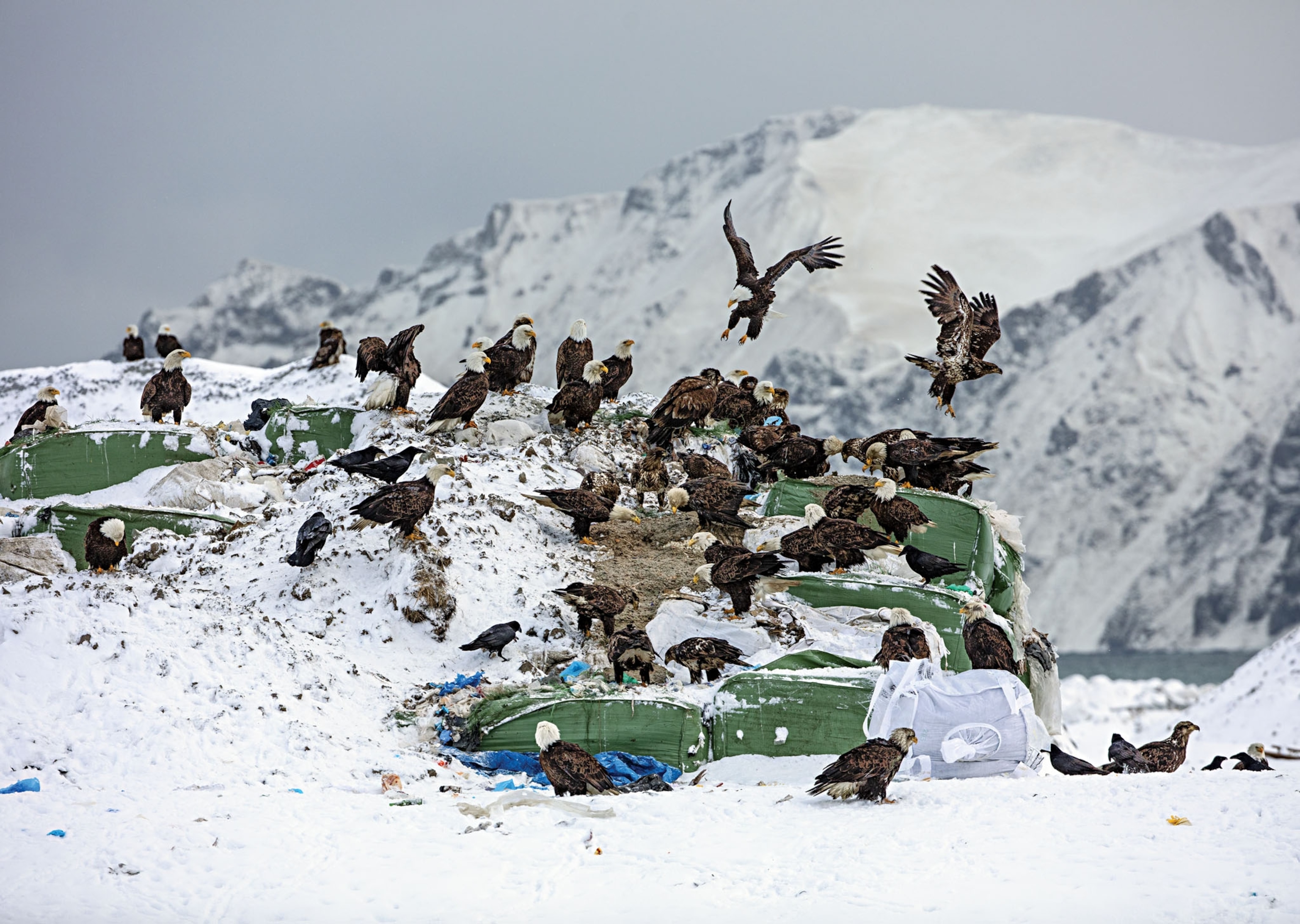
This Town Is Besieged by Violent Bald Eagles
In Alaska, America’s national bird sends people to the hospital.
Last January on Unalaska Island, Suzi Golodoff poured herself a hot cup of coffee, pulled on her boots, and stepped outside. She was immediately assaulted. “I’m pretty sure they were watching me leave the house, saw I had something in my mug, and waited,” she said. “I could have lost a finger.” But she didn’t. She was one of the lucky ones.
Her assailants were bald eagles, Haliaeetus leucocephalus—or Dutch Harbor pigeons, as they’re known around this fishing port in the Aleutian chain on the edge of the Bering Sea.
THE YEAR OF THE BIRD
In 1918 Congress passed the Migratory Bird Treaty Act to protect birds from wanton killing. To celebrate the centennial, National Geographic is partnering with the National Audubon Society, BirdLife International, and the Cornell Lab of Ornithology to declare 2018 the Year of the Bird. Sign the pledge to find out this month's action and share your actions using #BirdYourWorld to increase your impact.
Especially during fishing season, hundreds of eagles come to scavenge and nest in the area, which is home to about 4,400 human residents. The birds make their presence known from atop telephone poles and stoplights. They accost people who wander too close during nesting season, sending victims to the medical clinic for scalp stitches. And they swarm every boat that comes into port, festooning the rigging by the dozen like baleful Christmas ornaments.
We’re used to seeing America’s national bird depicted as a majestic hero plucking wild salmon from pristine streams. But here you can see eagles for what they really are: scrappy, opportunistic feeders. If fresh fish isn’t available, the birds will eat seagulls, ducks, squirrels, mice, the occasional raven, bits of rotten meat dug out of the trash—or, in one case, a piece of pepperoni pizza snatched out of a teenager’s hand. Like us, eagles are adaptable. We should be proud.

